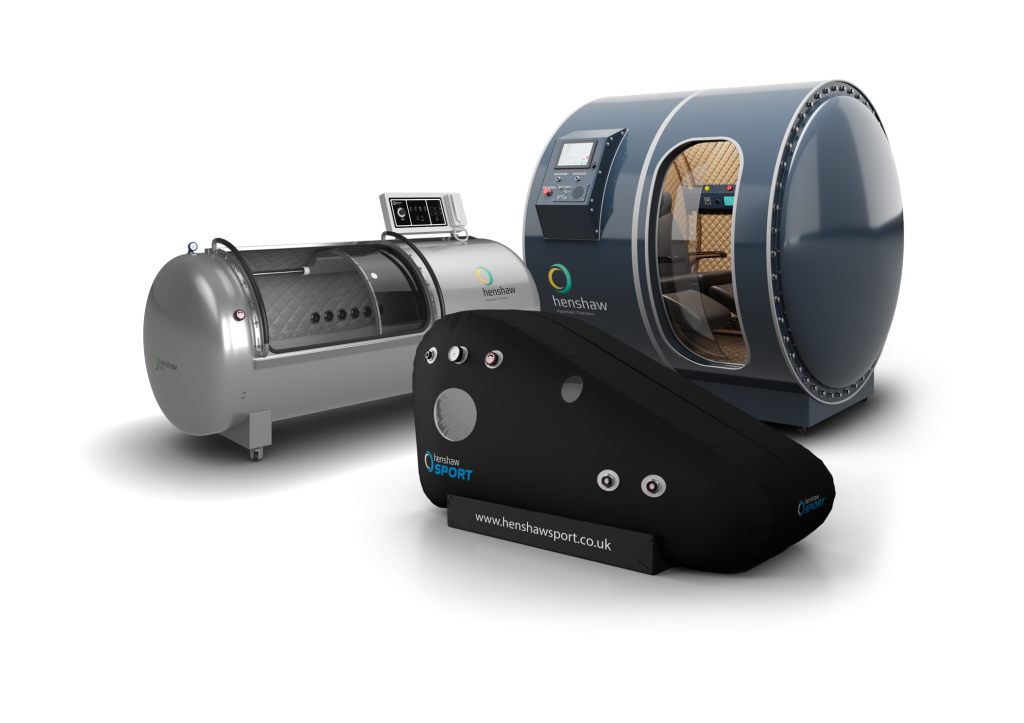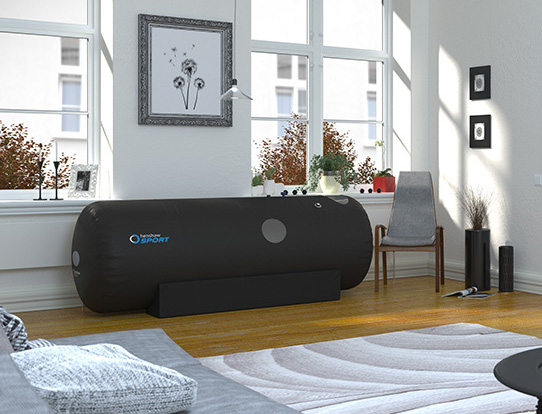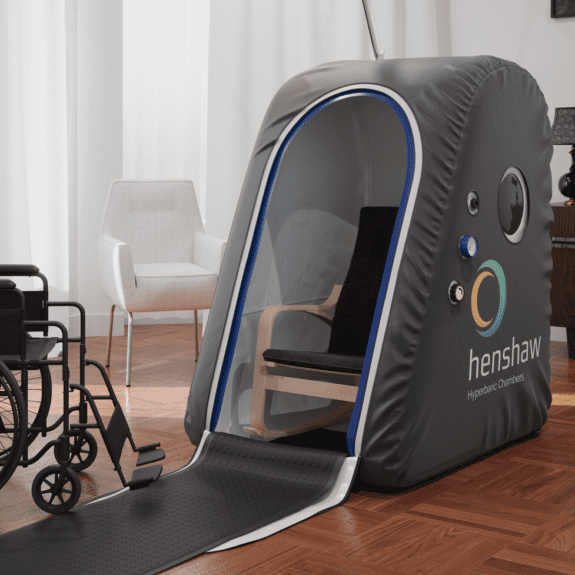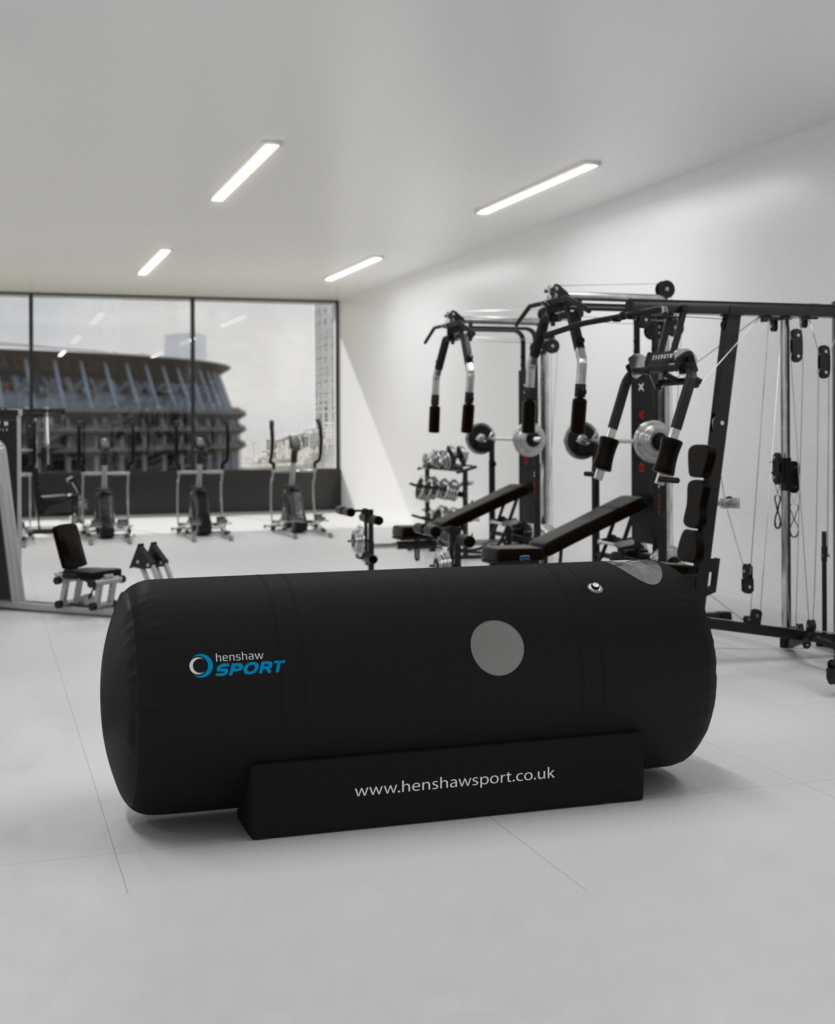Expert Q&A with Hayden Dunstan – part 2
We spoke to HBOT Expert Hayden Dunstan about Selecting the Right Chamber.

Q. Can you explain what a soft-shell chamber is and how it differs from a hard-shell chamber?
A. A soft-shell or soft-sided chamber is one constructed from a soft pliable usually woven fabric, normally a nylon type weave but can be made from membrane type materials as well.
They usually have zippers to close them to create a seal and will usually have automatic pressure relief valves to prevent over pressurization.
They are usually limited to 1.5 ATA at most, however some models are reported as high as 2 ATA.
They are compressed with air for fire safety reasons and oxygen is usually breathed from a mask (similar to standard first aid oxygen masks) or cannula in the chamber.
They will have an emergency pressure relief valve (exhaust valve) built in for emergency decompression.
They typically don’t have two-way voice communications but do have small transparent windows and voice can be heard through the pressure boundary.
In most cases flexible chambers are for a single occupant. Soft shell chamber up to 1.4 ATA are ideal for home users as they pose significantly less chance of complications.
Q. Can you explain what a hard-shell chamber is and how it differs from a soft-shell chamber?
A. A hard-shell chamber is made from a rigid material such as steel or aluminium, or other non-metallic materials such as special plastics and carbon fibre.
A rigid chamber made from metallic materials is generally capable of higher pressure and will have acrylic viewports or an acrylic door, and they can be made to deliver 2 ATA and even up to 3 ATA in some cases.
They should have two-way voice communications as well as internal controls for the emergency abort of a treatment and the ability to decompress the chamber form inside to effect egress.
Chambers for more than one occupant (Duoplace or Multiplace) are usually hard-shell chambers however many are mono place as well.
Hard-shell chambers generally have a longer life span than their flexible soft cousins, making them ideal for clinical or medical settings, however they can be used at home with the right training.
Design standards for rigid hard-shell chambers are more exacting than those for soft-shell chambers.

Q. Why are soft shell chambers typically limited to a maximum pressure of 1.4 ATA?
A. The materials used in the construction of soft-shell chambers is limited in its ability to withstand pressure when compared with metallic materials such as aluminium and steel.
Although there are some on the market capable of 2 ATA, the number available is very small, and if they do not have PVHO accreditation then it is unwise to purchase them as the pressure boundary could well fail, creating a dangerous situation for the occupant in terms of pressure related injury (barotrauma).
Some 2 ATA soft-shell chambers have straps to help reinforce the strength of the pressure boundary, however this only increases strength marginally over standard weave designs and doesn’t make pressure over 2 ATA any safer.
There is only one set of PVHO approved flexible chambers in the world capable of anything more than 2 ATA and these are made for military and commercial use and are exceptionally expensive by comparison… in the region of £250,000 for a single person evacuation chamber for diver recompression.
They are made from a patented special weave process and some even have frames to help reinforce and increase their pressure tolerance, however this only marginally raises the rating, and the additional costs sometimes isn’t worth the extra little bit of pressure.
1.4 ATA is considered the beginning of a full HBOT dose. 1.3 ATA is considered mild hyperbaric oxygen therapy (mHBOT). There is ample evidence in the outside as to its efficacy at these pressures. 1.5 ATA is sometimes referred to as medium hyperbaric oxygen therapy, however it is technically recognised by the UHMS as a full medical dose.

Q. What risks are associated with using soft-shell chambers at pressures above 1.4 ATA?
A. The risk of catastrophic failure of the pressure boundary (the shell itself) is the main risk.
A sudden loss of pressure can lead to serious pressure related injuries to the lungs and other air spaces in the body.
Secondary problems can develop in terms of plastics that are not designed to withstand the pressure, releasing toxic vapours.
There is good reason the materials used on their construction are limited to 1.4 ATA at most.
Zippers used for closures are not as strong as some mechanisms found on hard shell chambers and these can and do fail when over pressured with frightening results and consequences.
Do not be tempted to modify your chamber in any way to achieve a higher pressure. This can lead to serious injury and even death in severe cases.
Q. Are there any regulations or guidelines in place regarding the use of soft-shell chambers at higher pressures?
A: Currently chambers below 1.5 ATA are excluded from pressure vessel regulations in the UK and around the world. This may change suddenly though, and it is wise to ensure the chamber you are purchasing is as close to the PVHO design standard as it can be.
UK regulations don’t provide for chambers below 1.5 ATA, but the ASME PVHO 1 – 2023 in the USA does have provision for pressure vessels above a differential of 2 psi. That’s 0.136 atmospheres above normal atmospheric pressure, or an absolute pressure of 1.136 ATA.
Many unscrupulous suppliers use this regulatory anomaly as a way to skirt around their responsibility to provide quality products tested against a recognised international design standard.
Q. What factors should individuals or businesses consider when choosing between soft shell and hard-shell chambers?
A: I would place life span and reliability at the top of what might be a long list of points used to compare them.
Flexible chambers are usually not as long lived as hard-shell chambers are. This is one reason they are more affordable to buy. The materials cost less to produce.
Hard-shell chambers need to be inspected annually and re-certified with what’s called a “Re-life-ing” process every 10 years or 10,000 pressure cycle, whichever comes first.
Provided they remain undamaged and the acrylic components are replaced, a hard shell chamber can go on for decades where a flexible soft-shell chamber may not.
The fabric weave and flexible components are subject to wear and tear that is not present for hard-shell chambers.
A lot will depend on the reason for purchase, the frequency of use, funds available to invest, and so on.

Q. For someone new to hyperbaric oxygen therapy, what advice would you give to ensure they are using the equipment safely?
A: Training… Training…. Training…. And more training! It cannot be understated.
Operators, especially those in some form of clinical practice, be it medical or complementary and alternative medicine, must be well versed in the physics, physiology, equipment in use and safety measures and procedures.
Ask your supplier about ongoing training and development. Even home users need some training. A chamber is essentially a life support system and should always be regarded this way.
Q. How can a customer ensure they’re purchasing from a reputable supplier? Are there any red flags to watch out for?
A: Don’t be pressure to buy in a hurry. If they’re a good supplier, they aren’t going anywhere.
Check their ISO status and any other accreditation that might apply. Make sure that they are ISO accredited themselves and aren’t just relying on an ISO accreditation that their supplier or manufacturer may have.
Take your time and don’t let them push you into some special “deal” or anything of that sort.
Also don’t be afraid to ask for evidence that the chamber is designed and built to an acceptable standard. Ask for certificates of compliance, materials traceability, design inspection certificates and test data, calibration certificate for ancillary equipment and so on.
There is a lot to know before committing. There is a lot of information in the buyers guides on this.
Also beware that when a salesperson tells you that the chamber doesn’t have to comply with “ABC or XYZ” standard, they may be gaslighting you.
Construction standards apply to everything sold in the UK and Europe, and a CE or UKCA mark doesn’t mean the chamber is necessarily compliant in terms of pressure equipment compliance. Usually, these marks are affixed for electrical and RoHS compliance only.
Question your sales team. You have a right to do this when you’re investing a substantial amount of money.
Check company status on the Companies House Website too. Check they have a registered UK base and can provide local after sales service. Many cannot, and enforcing any kind of culpability is near impossible with suppliers who are not UK based.
Savings on purchase price doesn’t always equate to long term savings. Bad suppliers will cost you more in the long run.
